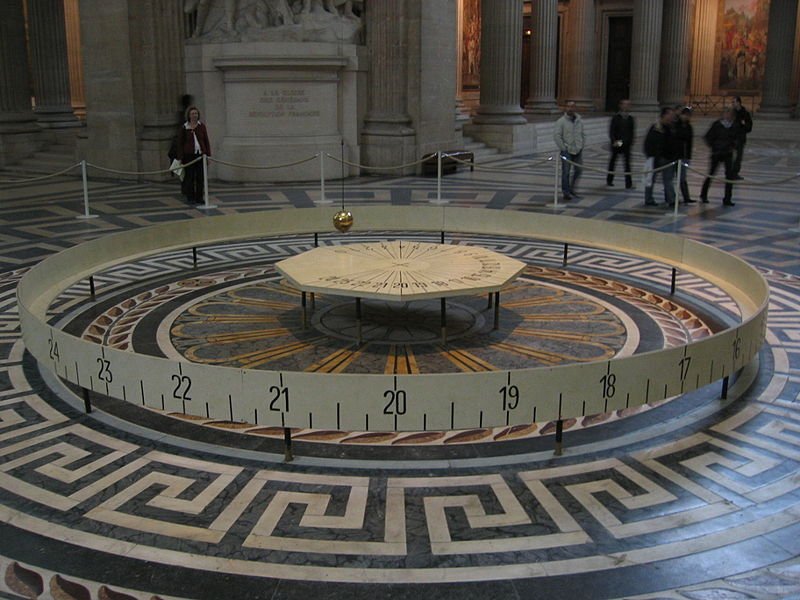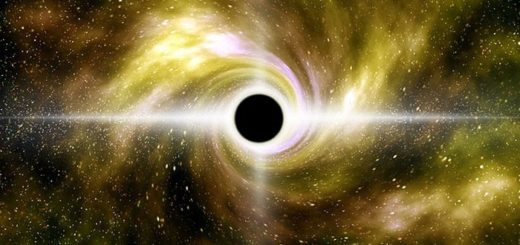Foucault Pendulum Anomaly Could Re-Write Laws Of Physics During The Total Solar Eclipse In USA

Cynthia McKanzie – On August 21, 2017 people in USA will be able to enjoy a spectacular total solar eclipse. During this amazing and much anticipated event that has been nicknamed the Great American Eclipse, the Moon’s shadow will race across the continental United States from Oregon to South Carolina.
What many do not know is that scientists will observe something entirely different that has the potential to re-write the laws of physics – namely the Foucault Pendulum anomaly.
The Foucault Pendulum is a device that you can see hanging in many science museums, universities and planetariums today. The United Nations headquarters in New York City has one, while the largest Foucault pendulum in the world, Principia, is housed at the Oregon Convention Center.
It was invented by French physicist Léon Foucault in 1851 to demonstrate the rotation of the Earth. Of course, the concept that the Earth revolves was nothing new or radical, but the pendulum was the first simple proof of the rotation.
In 1954, Nobel laureate Maurice Allais who had an interest in physics, particularly some alternative approaches to gravity and electromagnetism, was studying the Foucault pendulum. He wanted to see he could find ways to change the steady course of the pendulum by making the weight out of different materials (glass, iron) or changing the temperature or air pressure.
He measured the rate at which a Foucault pendulum shifted over time. According to known physics, there shouldn’t be any effect at all, but Allais observed that during the June 30, 1954, and October 2, 1959, total eclipses of the Sun something interesting happened. He detected “anomalies in the movement of the pendulum” during the time when the Earth, the Moon, and the Sun were aligned.
It came to be known as the Allais effect, or Allais anomaly.
Maurice Allais emphasized the “dynamic character” of the observed effects: “The observed effects are only seen when the pendulum is moving. They are not connected with the intensity of weight (gravimetry), but with the variation of weight (or of inertia) in the space swept by the pendulum. Actually, while the movement of the plane of oscillation of the pendulum is inexplicable by the theory of gravitation, the deviations from the vertical are explained perfectly by that theory. The deviations from the vertical […] correspond to a static phenomenon, while my experiments correspond to a dynamic phenomenon.”
The reason behind the Foucault pendulum anomaly is unknown. Scientific explanations include the presence of dark matter or even gravitational anomalies. Many orthodox scientists have dismissed have dismissed the Allais effect as likely being due to poor experimental set-up.
Some argue that it isn’t a real effect, some argue that it’s a real effect, but is due to external factors such atmospheric changes of temperature, pressure and humidity which can occur during a total eclipse. Others argue that it’s a real effect, and is due to “new physics.”
See also:
Great Attractor: Mysterious Gravitational Anomaly Beyond Hydra-Centaurus Supercluster
The Old Man Of Crater Lake: Mysterious Tree Trunk That Defies The Laws Of Physics
Time Travel Is Mathematically Possible And We Have A Model For A Time Machine – Scientist Says
This latter view has become popular among supporters of alternative gravity models. Allais himself claimed that the effect was the result of new physics, though never proposed a clear mechanism. As a result, the experiment has become “tainted” by fringe science to the point that mainstream scientists don’t really do the experiment any more.
Some more modern experiments have been conducted by astronomers and physicists, but the results have been inconclusive so far.
During the annular solar eclipse of September 22, 2006, a Romanian science team noticed odd behavior of the paraconical pendulum.
During the solar eclipse of August 1, 2008, a Ukrainian team and two Romanian teams worked together hundreds of kilometers apart with different apparatuses. All three teams detected unexplained and mutually correlated disturbances.
Same teams repeated a dual experiment during the annular solar eclipse of January 26, 2009, this time outside of the shadow zone, with the same significant correlation between the behavior of light torsion balances and a Foucault pendulum. They also registered similar anomalies using a Foucault pendulum and a very light torsion balance, both located underground in a disused salt mine with minimal interference, during the partial solar eclipse of June 1, 2011.
These are very interesting scientific results that speak in favor of Allais’ discovery, but more evidence is needed before scientists accept Maurice Allais statement that the eclipse effect is related to a gravitational anomaly.
During the upcoming eclipse, scientists will have an excellent opportunity to find out whether the Foucault pendulum anomaly really can re-write the laws of physics or if the observation made by Allais was simply an error.
Written by Cynthia McKanzie –
Copyright © – All rights reserved. This material may not be published, broadcast, rewritten or redistributed in whole or part without the express written permission of
Brian Koberlein – The Pendulum Of Truth
Hecht, Laurence (24 October 2010). “In Appreciation of Maurice Allais (1911-2010) The New Physical Field of Maurice Allais



 Creators of mankind
Creators of mankind Description of “Tall white aliens”
Description of “Tall white aliens” Where they came from?
Where they came from? About hostile civilizations
About hostile civilizations The war for the Earth
The war for the Earth “Tall white aliens” about eternal life
“Tall white aliens” about eternal life Video: “Nordic aliens”
Video: “Nordic aliens” Aliens
Aliens Alien encounters
Alien encounters The aliens base
The aliens base UFO
UFO Technology UFO
Technology UFO Underground civilization
Underground civilization Ancient alien artifacts
Ancient alien artifacts Military and UFO
Military and UFO Mysteries and hypotheses
Mysteries and hypotheses Scientific facts
Scientific facts


















